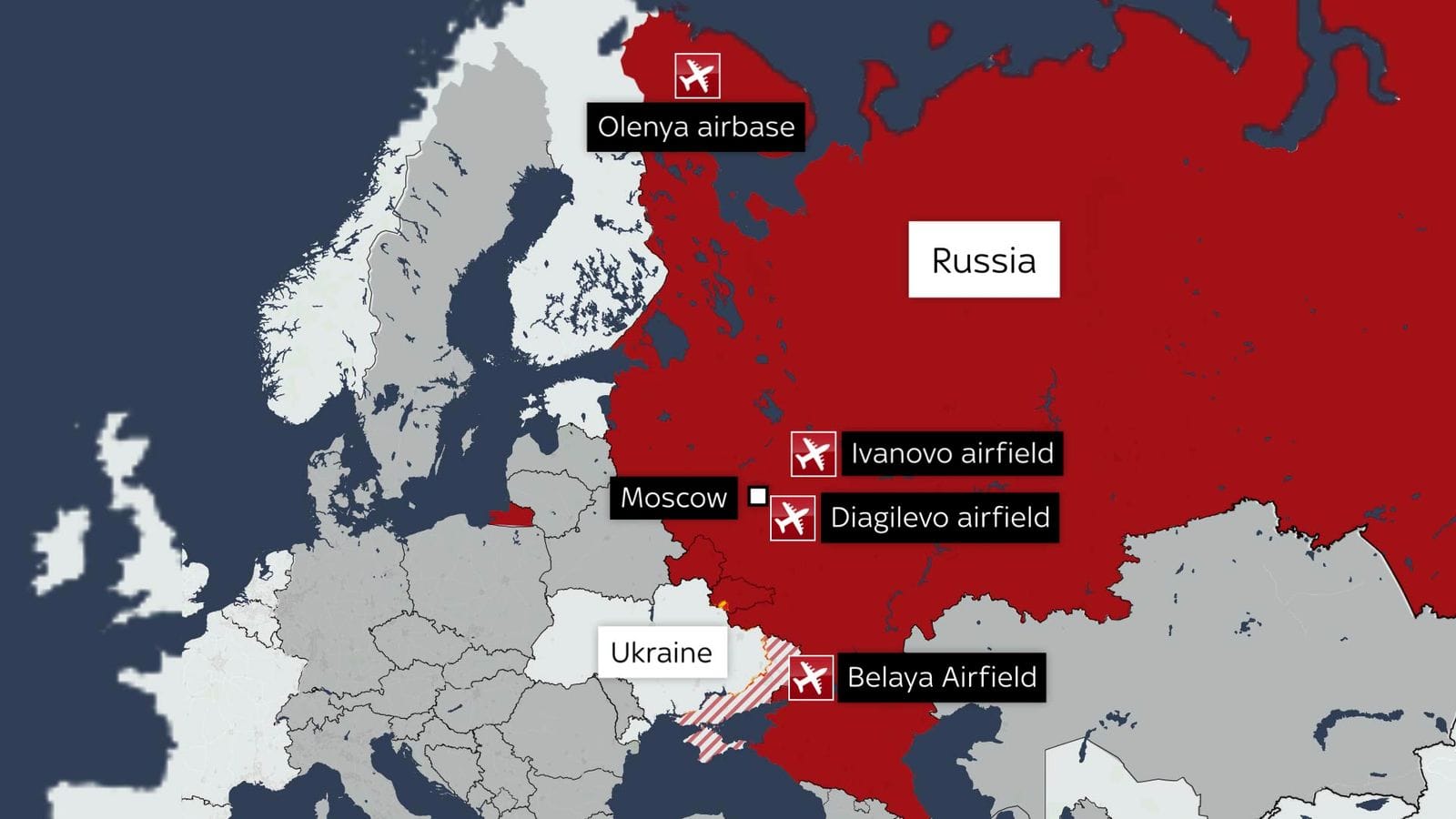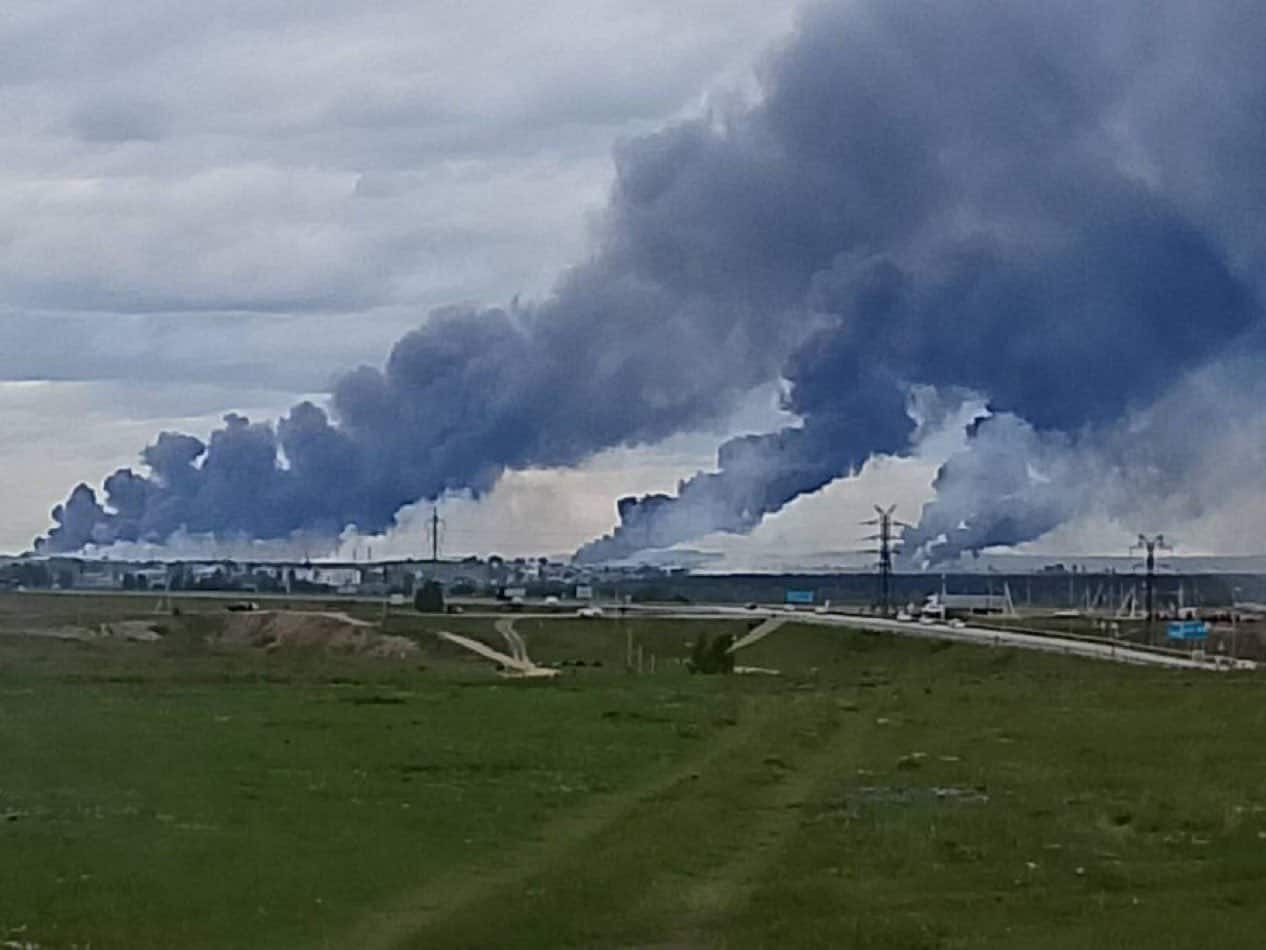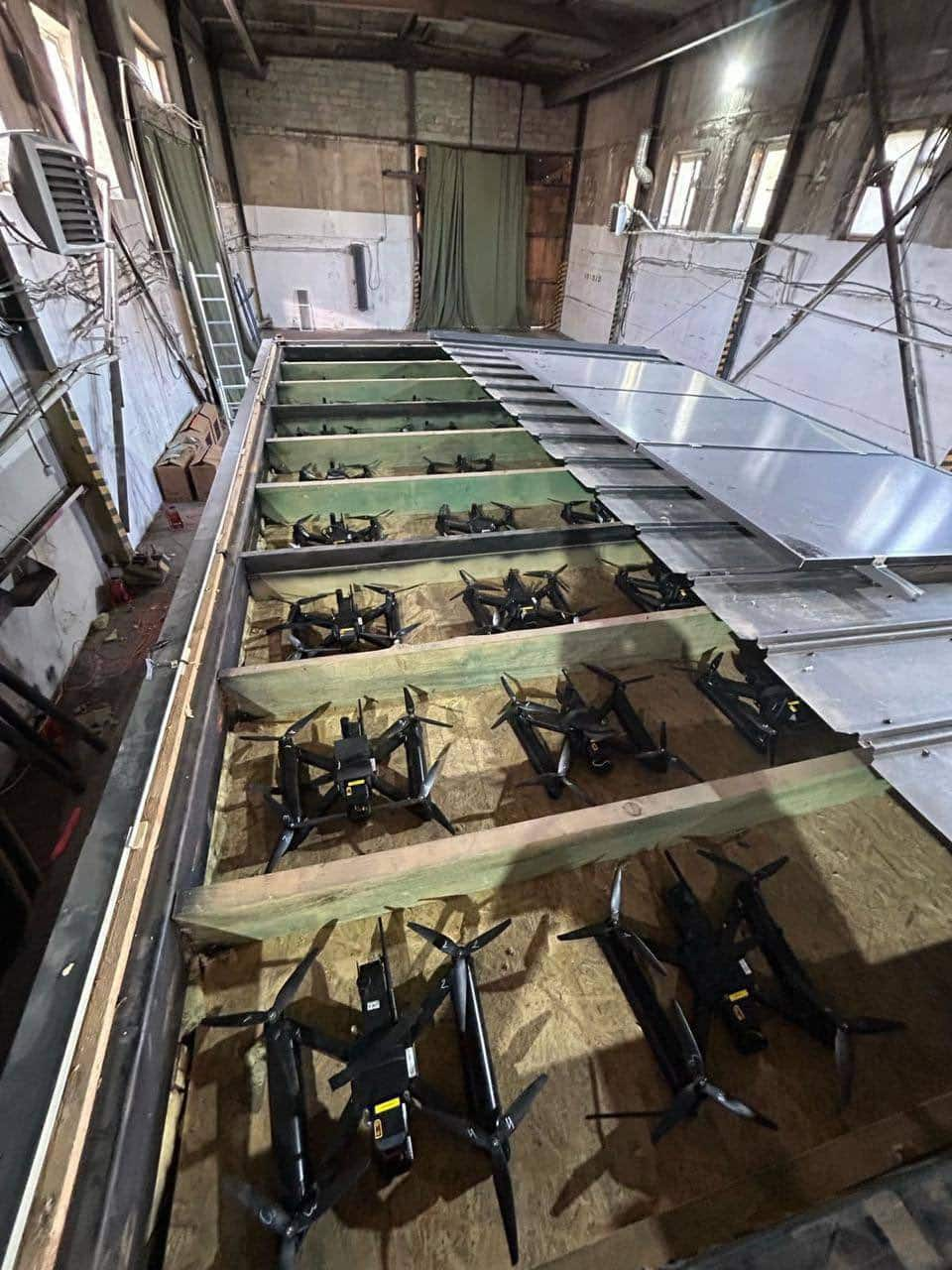
On June 1, Ukraine launched a clandestine attack, codenamed 'Spider Web,' on Russian military airfields in what observers are calling one of the most ‘sophisticated and spectacular' operations of the war between the two nations, now in its fourth year since Russia's 2022 invasion.
The Ukrainska Pravda, citing a source in Ukraine’s Security Service (SSU), said that the strike was 18 months in the making and successfully targeted 41 Russian bombers. The operation was personally overseen by President Volodymyr Zelenskyy and executed by SSU chief Vasyl Maliuk.
Head of the Security Service of Ukraine Vasyl Maliuk delivered a report regarding todays operation. An absolutely brilliant result. A result achieved solely by Ukraine. One year, six months, and nine days from the start of planning to effective execution. Our most long-range pic.twitter.com/oN41NFYyfwVolodymyr Zelenskyy / (@ZelenskyyUa) June 1, 2025
“The SSU first transported first-person view drones to Russia, then mobile wooden crates. On Russian territory, drones were concealed under the roofs of these crates, mounted on lorries. At the designated time, the roofs were remotely opened and the drones took off to strike Russian bombers,” the source told Ukrainska Pravda.
The Ukrainska Pravda reported that it had obtained a photograph from the operation’s preparation phase and that all operatives involved in the historic mission had returned safely to Ukraine. The SSU source further said:
“Any detentions by Putin’s regime would be staged for domestic propaganda.”
How was it executed?
On the afternoon of 1 June 2025, the Security Service of Ukraine launched an attack on multiple Russian military airfields, targeting strategic bombers. Russian media later claimed that Ukrainian drones had been deployed from lorries parked at petrol stations, lending further credibility to the Ukrainian account.
 The locations of the Ukrainian targets (Image Courtesy: Sky News)
The locations of the Ukrainian targets (Image Courtesy: Sky News)
Scale of the attack and Russia’s reaction
According to The Guardian, the fleet of Ukrainian drones, which appeared to have been smuggled into Russia ahead of the surprise attack, reportedly took out dozens of aircraft deep inside Russian territory. Simultaneously, Russia conducted a bombing on a Ukrainian base, killing at least 12 soldiers.
“On the eve of peace talks, the drone attack on four separate airfields was part of a sharp ramping up of the three-year war, with Russia launching waves of drones at Ukraine, while Moscow said sabotage was to blame for two train derailments that left seven people dead,” The Guardian reported.
Video footage from several Russian military airfields showed destroyed aircraft and planes engulfed in flames, though the full extent of the damage is still being assessed.
Irkutsk Oblast Governor Igor Kobzev later confirmed: “A drone attack on a military unit in the village of Sredny.”
He also said that the source of the drones was a truck. Murmansk Governor Andrey Chibis confirmed: “Enemy drones have attacked the territory of the Murmansk region,” without providing further details.
An Al Jazeera report from Moscow said: “According to witnesses on the ground and local officials, these drones were launched from sites near the airbases. That means it was an elaborate operation, most likely by the Ukrainians, that involved a number of people inside Russia.”
Both the Ukrainian drone assault and the Russian strike in a Ukrainian military training base occurred ahead of peace negotiations in Istanbul, Turkey, on June 2.
This morning, the world witnessed one of the most brilliant asymmetric strikes in modern warfare.Ukraine didnt just hit Russias planes. They hit Russias pride. They hit the illusion of control.The world saw that Russia is weaker than it pretends to be. pic.twitter.com/cnRgwRluR1 Caolan (@CaolanRob) June 1, 2025
Russia’s Defence Ministry said in a statement that the Ukrainian drones had attacked airfields in five regions, including Murmansk and Irkutsk, stretching across five time zones. The attack on Belaya air base in Irkutsk was especially significant, it marked the first time any location in Siberia had come under attack by Ukrainian drones since the full-scale war began.
The Olenya base in Murmansk, another site of the attack, is one of Russia’s key strategic airfields, known to host nuclear-capable aircraft, making it a high-value military asset.
Strategic Blow: 34% of Russia’s strategic bombers damaged, $7 billion losses
According to the Financial Times, a Ukrainian security agency estimate suggested that the Spider Web attack damaged 34 percent of Russia’s strategic cruise missile carriers, causing damage worth over $7 billion.

Image courtesy: @CaolanRob (X)
If verified, the strike constitutes the singlemost economically and militarily damaging drone operation Ukraine has carried out in the war so far. The bombers reportedly struck the Tu-95 and Tu-22 strategic aircraft, used by Russia to launch long-range missile attacks on Ukrainian cities, giving the attack clear strategic implications.
High-level planning and operational details
American political digital newspaper, Politico, citing an unnamed official within SBU, reported that the operation was authorised and carried out at the highest levels.
“Later, in the Russian Federation, the drones were hidden under the roofs of housings, already placed on trucks. At the right moment, the roofs of the housings were opened remotely, and the drones flew to strike the Russian bombers,” the official told Politico.
Ukrainian online newspaper, Kyiv Independent, added that unconfirmed videos on social media appeared to show FPV drones being launched from trucks parked near the airfields.
 Image coutesy: pravda.com.ua
Image coutesy: pravda.com.ua
The Guardian added:
“If the extent of the damage is confirmed, the attacks in Siberia would mark Ukraine’s most damaging drone strike of the war to date, amid an escalation in cross-border incursions before planned peace talks in Istanbul on Monday.”
Military analysts draw parallels with Israeli special ops
According to Times of Israel, some military analysts have likened Ukraine’s elaborate drone operation to a covert Israeli strike in September 2024, when Israel remotely detonated beepers and walkie-talkies it had earlier distributed to Hezbollah operatives in Lebanon.
That unprecedented and coordinated attack killed at least nine people and wounded some 2,800, after the devices exploded nearly simultaneously across multiple sites.

“[Israel’s] pager operation against Hezbollah, and Ukraine’s drone ambush today are separated by decades, geography, and technology — but united by three timeless elements: superior intelligence, operational innovation, and strategic audacity,” said John Spencer, Chair of Urban Warfare Studies at the Modern War Institute at West Point.
Spider Web among the greats?
Ukraine’s Spider Web joins a small cohort of globally-recognised operations defined by deep penetration, secrecy, and strategic precision. These include:
| Operation | Year | Country | Key Features |
| Entebbe Raid | 1976 | Israel | Hostage rescue mission 2,500 miles away, executed with elite forces. |
| Operation Neptune Spear | 2011 | United States | US Navy SEAL mission to kill Osama bin Laden in Abbottabad, Pakistan. |
| Operation Orchard | 2007 | Israel | Stealth bombing of Syrian nuclear facility; undetected by enemy radar. |
| Pager Bombing of Hezbollah | 2024 | Israel | Remote detonation of communication devices handed to enemy operatives. |
| Spider Web Operation | 2025 | Ukraine | Multi-regional, multi-phase drone strike using smuggled and disguised assets. |
With an estimated 34 percent of Russia’s strategic cruise missile fleet damaged, over $7 billion in losses, and 41 bombers reportedly hit, the strike is a turning point, not only tactically, but symbolically. It signals Ukraine’s increasing ability to strike strategic infrastructure deep inside Russian territory, using low-cost, high-intelligence tactics that challenge traditional definitions of state-on-state warfare.
According to The Moscow Times, the full consequences of the Ukrainian drone strikes on Russia’s military capabilities remain difficult to estimate at this stage. While Ukraine continues to endure near-daily aerial assaults that have severely strained its air defence systems, the symbolic weight of the Spider Web operation is already clear.
Russian military bloggers described it as a “black day for aviation,” with the pro-military Telegram channel Rybar calling it a “very heavy blow” and citing “serious errors” by Russian intelligence. Former Ukrainian president Petro Poroshenko, now an opposition figure, stated there were “no better arguments” for Ukraine on the eve of ceasefire talks with Moscow in Istanbul.
Discover the latest Business News, Sensex, and Nifty updates. Obtain Personal Finance insights, tax queries, and expert opinions on Moneycontrol or download the Moneycontrol App to stay updated!
Find the best of Al News in one place, specially curated for you every weekend.
Stay on top of the latest tech trends and biggest startup news.